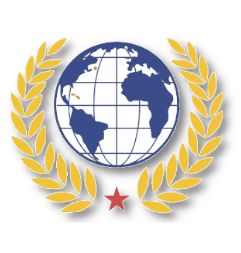 To ensure that a visit from a client or associate from another country is a smooth and productive exchange, gather and document as much information as possible by preparing a per-meeting briefing containing important visitor information, and a post-meeting debriefing for future reference. Certainly, this is done digitally today; however, having a hard copy binder serves as a great backup.
To ensure that a visit from a client or associate from another country is a smooth and productive exchange, gather and document as much information as possible by preparing a per-meeting briefing containing important visitor information, and a post-meeting debriefing for future reference. Certainly, this is done digitally today; however, having a hard copy binder serves as a great backup.
Preparing Your Briefing
 A briefing should consist of as much information as possible to help you establish your comfort level when meeting your international guests and their comfort level when meeting with you. Plus, it is very important to dress appropriately. Consider it your dress rehearsal.
A briefing should consist of as much information as possible to help you establish your comfort level when meeting your international guests and their comfort level when meeting with you. Plus, it is very important to dress appropriately. Consider it your dress rehearsal.
Before the event or meeting, get a list of guests. This will familiarize you with names (both spelling and pronunciation) and titles. Have an interpreter assist you with the pronunciations and help you create a list of conversation topics or questions you need to consider. A good interpreter should be able to give you an overview of the history, people, and culture. Have a translator available for assistance with documents.
Do not dress too casually. Most international visitors have a more formal approach to dress. How you dress shows respect! Dress conservatively, wearing good quality fabrics. Hair should be neat and not extreme.
Your briefing outline should include how to make formal introductions, including the proper form of address, eye contact comfort level, handshake customs, and business card exchange protocol. In addition to your organization, who else will be involved in the visit? You will need a list of their names and titles in order of rank and a summary of each person’s role. Then note how much time has been allocated for the visit for each organization.
Keep the visitor and your staff informed of the entire travel itinerary. Double check all travel arrangements to be sure reservations have been confirmed and flights are on schedule. Will there be a display of the visitor’s country (or state) flag in the meeting or conference room? A flag display sends a strong message that you respect your visitor.
Make sure everyone on your team, from cleanup to setup, has a clear agenda of the visit and knows his or her role. For example: Who will pick up visitors at the airport? It is important for most visitors that someone of equal rank greets them at the airport. How will they be transported to their hotel? Are special arrangements needed? Do not assume your visitor will find your location or expect them to rent a car, especially if this is a first time visit.
A client, Karen Wu, shares an experience she had when she served as administrative assistant to the new vice president of a large manufacturing company. His father, who was the epitome of protocol, retired and his son assumed the role. Representing a more casual approach to business, the son did not see the need for all the “protocol fuss.”
Their guests from Japan were arriving on a Monday night. Since it was NFL season, he sent Karen to pick up the guests and transport them to their hotel (a 90-minute drive). Karen knew this was going to be a BIG mistake; however, she could not alter his mind. Upon arrival, she contacted her boss and asked that he meet them in the lobby in an effort to save face. He declined and said that he would see them in the morning. (The game was on!) Needless to say, the guests from Japan were deeply offended, and the visit did not result in a renewed contract. Karin also left the company.
This might be a rare occurrence today; however, it still happens. Be sure protocol expectations are respected and arrangements to escort visitors to your meeting site from the hotel have also been arranged. In addition to your staff briefing, be sure your guest knows the schedule and has an opportunity to have questions answered.
Most cultures value hospitality. It is part of the communication process. Coffee, tea, juice, nuts, sweets/candy, and/or fruits should always be offered. If the visit’s agenda includes “free time,” make sure they have a map of the city and know their transportation, restaurant, sightseeing options, and ATM locations. Also, include security and medical information and explain special considerations. For example, not every country is as sensitive to nonsmoking areas as the United States has become or has the same tipping procedures. Never assume that your well-traveled guests will adapt with little assistance.
Preparing Your Debriefing
At the conclusion of each trip, prepare a debriefing outline and a cultural binder. In the outline, specify the date of visit, name of dignitary or guest, country, location of meeting, names and positions of participants, what went right, what went wrong, and how the next meeting can be improved.
In the cultural binder, include an overview and summary of the culture and your experiences or observations. Also, collect data that would be helpful when preparing for the next visit. This will be an invaluable tool the next time you receive international visitors—and it is especially important if there is a staff change.
Briefings and debriefings play an important role in
making international visits successful for everyone.

Helpful forms can be found in Chapter 10:
The Art of Professional Connections: Event Strategies for Successful Business Entertaining


